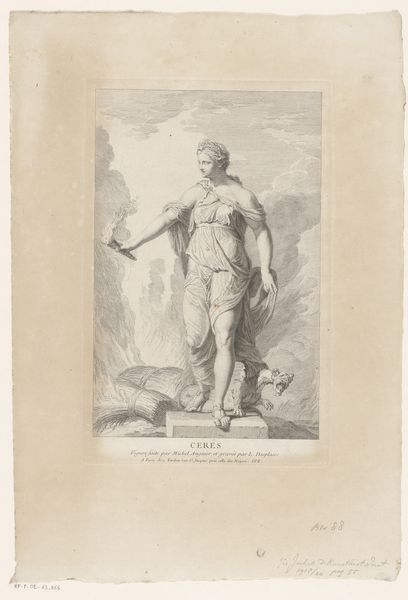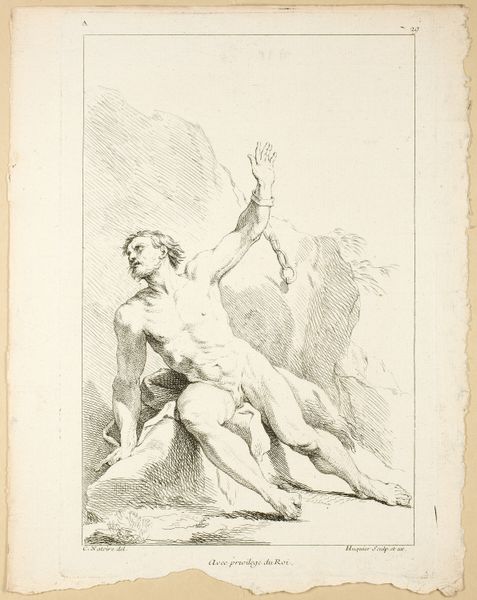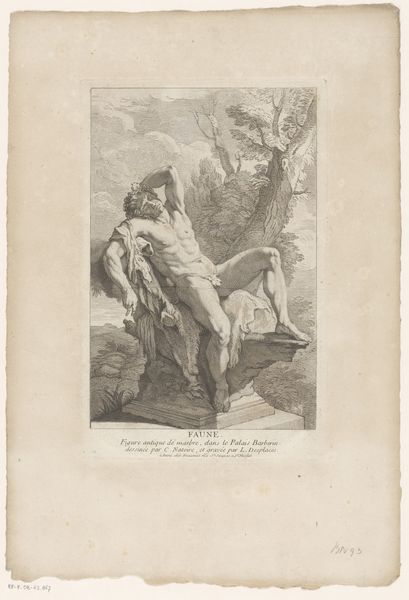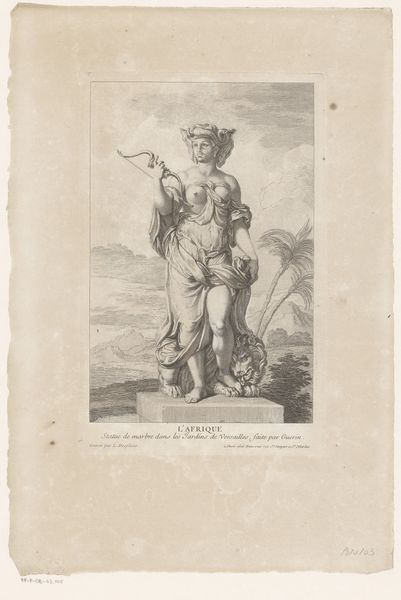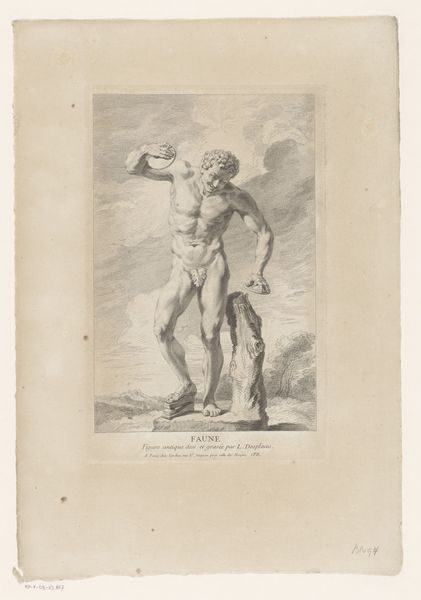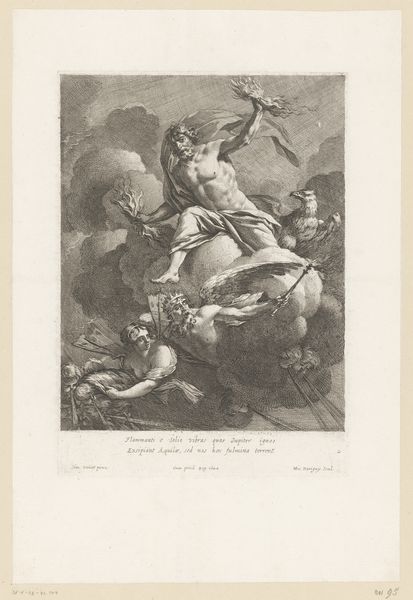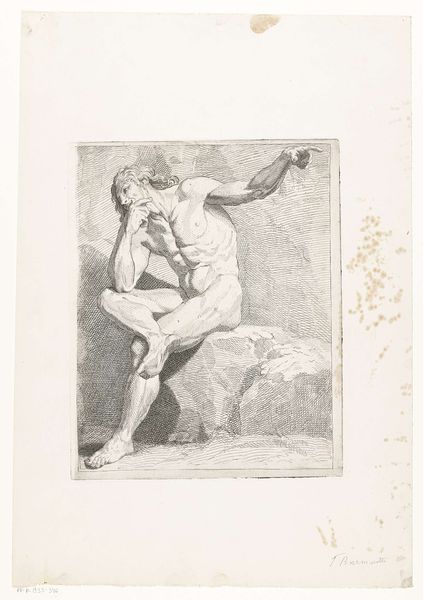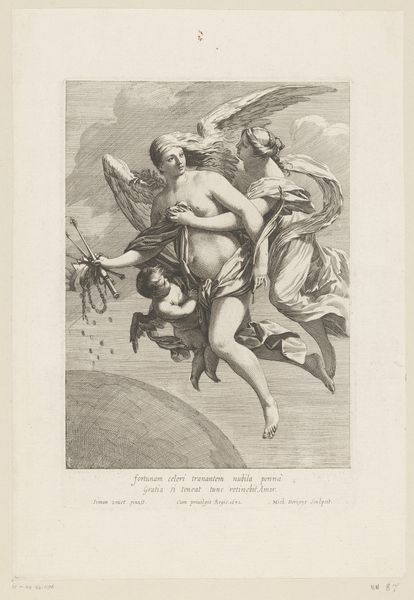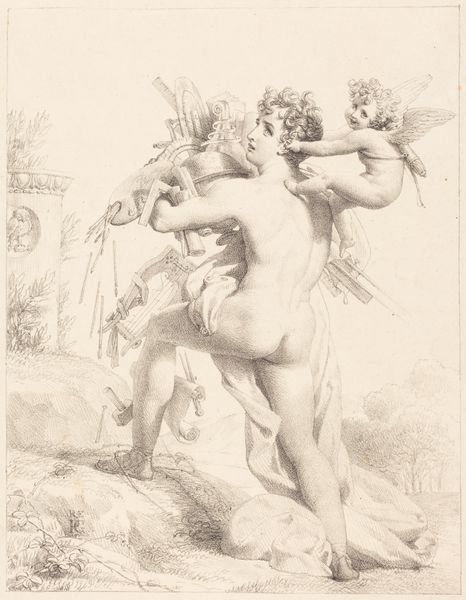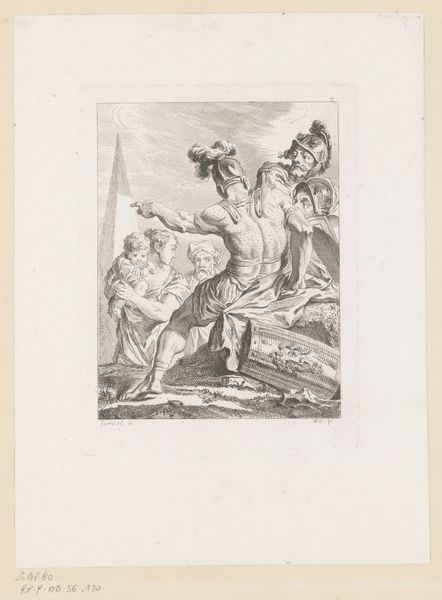
engraving
#
baroque
#
old engraving style
#
figuration
#
history-painting
#
nude
#
engraving
Dimensions: height 291 mm, width 184 mm
Copyright: Rijks Museum: Open Domain
Louis Desplaces created this engraving, Neptunus, after a work by Michel Anguier, likely in France in the early 18th century. Images of classical gods like Neptune were more than just illustrations of old stories. In the 17th and 18th centuries, they were often used to convey messages about power, authority, and even national identity. France under Louis XIV, for example, frequently used classical imagery to associate the king with the grandeur and power of the Roman emperors. Neptune, as god of the sea, could symbolize France's naval power and its ambitions for maritime dominance. Prints like this one also circulated within a sophisticated artistic culture, where connoisseurs collected and studied them, often comparing them to ancient sculptures. The engraver's skill in translating Anguier's original design into a print was highly valued and reflects the institutional support printmakers received at the time. To fully understand the print, we might research the political context of its creation, looking at the social and institutional history to illuminate the print’s significance.
Comments
No comments
Be the first to comment and join the conversation on the ultimate creative platform.


